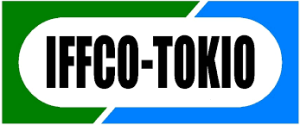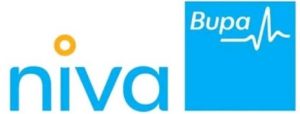Cerebellar Ataxia is not a progressive disease, which means symptoms are typically consistent and do not worsen over time. Other disorders that occur alongside Cerebellar Ataxia can possibly progress and get worse over time. Some forms of the disease can also lead to early death for certain individuals. It is possible for someone living with Cerebellar Ataxia to die from suicide or other conditions that result from severe depression or anxiety over losing independence as a result of the disorder. A person with Cerebellar Ataxia has an average life span just like anyone else on earth, however, they may experience difficulty with daily living activities.
Cerebellar Ataxia
Cerebellar Ataxia is an inherited or acquired disorder of the cerebellum which is located in the back part of your brain. The cerebellum controls our motor function and coordination, as well as regulates many other functions including speech. As you can imagine, this disease becomes quite difficult for children to learn new things as they grow up with ataxia – their ability to focus is also affected due to poor muscle control. With irregular muscle movements, it becomes hard for them to walk smoothly and place one foot in front of another continuously while walking – attention span gradually decreases over time because muscles become weak and slow down reflexes; lack of muscle coordination also makes it difficult for them to do simple things like tying shoelaces or even writing. These are just a few symptoms of Cerebellum disorder; however, there will be many others
What causes Cerebellar Ataxia?
The cause depends on the type of Cerebellar Ataxia as well as whether it is congenital (present at birth), sporadic (occurring later in life), or hereditary. One theory suggests that there may be a genetic link to Cerebellar Ataxia, particularly in cases where it occurs sporadically with no family history.
How is Cerebellar Ataxia treated?
While there is no cure for Cerebellar Ataxia, it can be managed through physical therapy, occupational therapy, speech therapy, and in some cases medication. It important to work closely with a team of physicians who are experienced in treating Cerebellar Ataxia as the symptoms vary widely from person to person and treatment will need to be tailored accordingly. The treatment must be specifically designed for the individual needs of the child, especially during early childhood when most neural connections are being formed. Stimulation therapies such as music therapy or sensory integration may help provide an additional layer of stimulation that children with this condition require more than typical children do. medications can help to control seizures or other side effects which can worsen the symptoms of Cerebellar Ataxia.
Ayurveda about Cerebellar Ataxia
Ayurveda, the science of life and health, is one of the oldest healing systems in India. It has now been rediscovered as an alternative therapy for many modern-day diseases. Cerebellar Ataxia or Cerny’s disease by Ayurvedic perspective is characterized by irregular involuntary movements, progressive loss of muscle tone (muscle mass) leading to a physical disability. The symptoms of cerebellar ataxia are:
Squinting of the eyes
‘Agnisrottham’ – mainly due to irregular accommodation which can be corrected with glasses but not cured completely and needs medication as well. This could happen if there is improper functioning of Udita Prana Vayu and Maraka prana vayu (which are responsible for the transmission of sensation through the radiations from the optic tract to the cerebellum).
Trembling, shaking, shivering, or shaky movements of hands, arms, legs
‘Maranam’ – which is due to weakness and wasting away of muscles, leading to impaired motor power and other symptoms. When this happens there is improper functioning of Udhara Prana Vayu (responsible for the nourishment of body cells) which could be restored with Ayurvedic medication
Clumsiness in walking
‘Antaukaalatathyam’ – because Udita prana Vayu and Tadaga prana vayu do not function properly.
Loss of balance
‘Nidraasam’ – which could be either in the form of Ataxia or Astasia-abasia, ie. inability to stand and walk and irregularity in gait or stepping due to weakness, leading to an unsteady posture. This is because Maraka prana Vayu which controls body position (ie. Antanga prana Vayu) stops functioning well in cerebellar ataxia (this can be prevented if treated on time with proper medication).
Speech disorders like stuttering etc.
‘Bhashaasroto mantachapranastambhaatah’ – Occurs because there will be improper functioning of Udita prana Vayu, which is responsible for speech and expression. This can be monitored using certain tools like Language Assessment Battery (LAB) or Aphasia Screening Test (AST).
Tremors in the limbs
‘Maradambbibhedam’ – because there will be improper functioning of Maraka prana Vayu (responsible for body movements), which could be restored with Ayurvedic medication.
Ayurveda has a holistic approach to medicine where everything is treated as one entity not as separate entities so it looks at Cerny’s disease from a combined perspective of both neurological disorders and muscular disorder by addressing all these factors viz; nervous system abnormalities, structural abnormalities and functional abnormalities. It is not just a neurological disease because it affects other systems of the body as well.
Ayurvedic Approach to Cerny’s Disease
According to ayurveda, any abnormality in functioning of a doshas (dosha means ‘fault’, ‘defect’ or ‘disease’) leads to certain clinical symptoms so for cerebellar ataxia we analyze all these three factors viz; vata, pitta and kapha each separately and then arrive at an ideal treatment plan for preventing further progression of Cerebellar Ataxia. We also try and give some direction in treating the neurodegenerative phase because there are a lot of research going on which is not having good results and still has a lot of unanswered questions, so the approach that ayurveda takes is to address these issues at an earlier stage.
Vata Dosha and Cerebellar Ataxia
Vatachyam (abnormal functioning of Vata) causes nerve cells to degenerate resulting in cerebellar damage. Ayurvedic injunctive therapy for cerebellar ataxia involves using natural herbs to normalize this abnormal Vata function by reducing anxiety, restlessness, etc. with help of preventive and curative treatments which helps in the reduction of spasticity, tremor, dragging toes while walking, and bodily rigidity. This type of treatment will reduce the intensity as well as the frequency of attacks or episodes that occur because of Cerebellar ataxia.
Pitta Dosha and Cerebellar Ataxia
Pittatyam is another abnormality causing degeneration of nerve cells mainly of hind limbs and this can be cured with help of specific diet. Since cerebellar ataxia patients have a tendency to overheat, it is important for them to keep their body cool by avoiding spices in food and staying away from running water or ice creams etc. Also for Pittadoshas ayurvedic medicines are given to reduce inflammation, burning sensation etc. which reduces severity as well as frequency of attacks that occur due to Cerebellar Ataxia.
Kapha and Cerebellar Ataxia
Kaphatyam causes degeneration predominantly in the upper limb muscles and phrenic nerves (responsible for respiration). When we look at the Ayurvedic treatment for cerebellar ataxia, we have to concentrate on reducing cough because an attack or stoke in coughing may lead to permanent damage. The teeth grinding and pain on chewing also need addressing by homeopathy as well as ayurveda because it may cause further neurodegeneration.
Ayurveda says that if one has a tendency of becoming over weight then there is more chances of getting affected with cerebellar ataxia . So anti-inflammatory ayurvedic medicines are given to reduce obesity which reduces attacks that occur due to Cerebellar Ataxia.
Ayurveda is not miraculous, I know this but you can avoid the possibly coming disability with help of Ayurveda
Vaidya Pardeep on Ataxia treatment
Consult with Vaidya Pardeep Sharma for a better understanding of the cerebellar ataxia and you can know about all the aspects of the disease.













